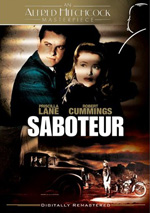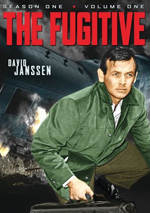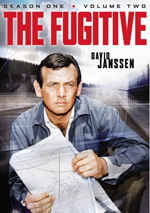|
UNIVERSAL
|

| |
|
MOVIE INFO
|
|
Director:
Alfred Hitchcock
Cast:
Priscilla Lane, Robert Cummings, Otto Kruger, Alan Baxter, Clem Bevans, Norman Lloyd, Alma Kruger, Vaughan Glaser, Dorothy Peterson
Writing Credits:
Peter Viertel, Joan Harrison, Dorothy Parker, Alfred Hitchcock (story)
Tagline:
3000 miles of terror!
Synopsis:
This grand Alfred Hitchcock thriller finds the director making full use of the North American continent and mythos to tell the story of an innocent on the run. Barry Kane (Robert Cummings) is a man unjustly accused of sabotaging an American airplane factory in Glendale, California, during WWII. He escapes the police with a daring jump off a bridge and sets out in pursuit of the real criminal. Full of quirky characters and plot surprises, this forerunner of The Fugitive is a Hitchcock gem full of action as it spirals towards its stupendous climax.
MPAA:
Rated PG
| |
|
DVD DETAILS
|
Presentation:
Fullscreen 1.33:1
Audio:
English Monaural
Subtitles:
English
Spanish
French
Closed-captioned
Supplements Subtitles:
English
Spanish
French
Runtime: 109 min.
Price: $14.98
Release Date: 6/20/06
Bonus:
• “Saboteur: A Closer Look” Documentary
• Storyboards
• Alfred Hitchcock’s Sketches
• Production Photographs
• Production Notes
• Trailer
| |
|
PURCHASE @ AMAZON.COM
|

| |
|
EQUIPMENT
|
Panasonic 50" TH-50PZ77U 1080p Plasma Monitor; Harman/Kardon DPR 2005 7.1 Channel Receiver; Toshiba A-30 HD-DVD/1080p Upconverting DVD Player using HDMI outputs; Michael Green Revolution Cinema 6i Speakers (all five); Kenwood 1050SW 150-watt Subwoofer.
| |
|
RELATED REVIEWS
|


| |
[an error occurred while processing this directive]
|
Saboteur (1942)
|
|
Reviewed by Colin Jacobson (February 99, 2008)
Alfred Hitchcock provides a wartime piece of suspense with 1942’s Saboteur. Barry Kane (Robert Cummings) works at an airplane assembly plant with his buddy Ken Mason (Virgil Summers). A suspicious fire engulfs the factory, and Ken dies in an attempt to fight the blaze.
The authorities conclude that arson caused the incident, and Barry becomes a prime suspect in the sabotage. When he and Ken went to combat the flames, Barry handed a fire extinguisher to his pal. It turns out that this device was full of gasoline and obviously accelerated the fire – and Mason’s demise. Barry claims that a man named “Fry” (Norman Lloyd) gave the extinguisher to him, but no one knows of this guy and he can’t be located.
Rather than deal with the cops, Barry flees and becomes a fugitive. He chooses to investigate the crime on his own and he heads to a ranch he saw listed on an envelope possessed by Fry. There he meets Charles Tobin (Otto Kruger), the ranch owner who also participated in the sabotage. Tobin arranges for Barry’s arrest, but he manages to escape. The flick follows his attempts to stay away from the law and to prove the conspiracy for which he stands accused.
I’ll say this right now: if Saboteur didn’t directly influence The Fugitive, I’ll eat a bug. While the TV series – and 1993 movie - didn’t provide carbon copies of the Hitchcock flick, it doesn’t take much to draw obvious parallels between them. Granted, one could make the same claim about any “fugitive” story, but I think the similarities on display seem much too prominent to chalk up as genre basics. I will admit that the stories diverge pretty clearly after the first act; Saboteur and Fugitive share their basic premises but go their own ways after that.
Saboteur sure doesn’t waste any time in its pursuit of plot and action. The movie barely gets started before the fire strikes the plant. Some may view that as a negative, since we get to know almost nothing about our protagonist before he goes on the lam, but I don’t mind this choice. Indeed, I suspect it was an intentional decision to make Kane more of an “everyman”. Since we receive so little exposition or detail about him, we can more easily put ourselves in his shoes.
That path seems more important for Saboteur given its status as a piece of wartime propaganda. Clearly the movie wants to remind us that potential dangers to national security lurk around every corner. It goes to pains to show that you can’t judge a book by its cover. It’s no accident that the film’s most reputable characters are actually its most evil, while folks on the outskirts of society – a blind man, circus freaks – demonstrate proverbial hearts of gold.
The propaganda side of things occasionally becomes a little too heavy, but only for very brief moments. For the most part, the film wears that mantle well. It’d be hard to find an early 1940s movie with this subject matter that didn’t do its civic duty; Saboteur handles those elements with a general lack of heavy-handed sermonizing.
Because of Hitchcock’s deft touch, he ensures that the movie remains darned entertaining after more than six decades. It comes as no surprise that he paces Saboteur so well. The flick progresses at a good clip, and it never becomes predictable. We can’t wait to see what will happen next in this inventive, bright story.
I also really like Hitchcock’s playful nature. With only a few notable exceptions, the characters and situations often aren’t what we expect. Take the truck driver who helps Kane early in the flick. He’s so bored with his mundane life that he actually gets excited when a cop pulls over his truck! The driver offers a delightfully peppy personality, and Hitchcock sprinkles such appealing twists throughout the film. He makes it quirky but not in a self-conscious way. There’s an amusing oddness to the whole thing.
I must admit I’m not wild about Cummings as our hero. He’s such a blandly stereotypical All-American Boy that he barely sticks to the film. As I alluded earlier, this was likely an intentional choice, as the filmmakers wanted the viewers to more easily put themselves in Kane’s shoes, but it does become tough to really care about him. Cummings shows little personality, even though the feisty Priscilla Lane – as love interest Pat – does her best to spice up their scenes.
These minor gripes aside, I find a lot to like about Saboteur. Well-paced, inventive and consistently intriguing, it stands above the average 1940s thriller. We sense the era in which it was made but still can find it almost timeless after 66 years.
|
The DVD Grades: Picture B-/ Audio C+/ Bonus C+
|
|
Saboteur appears in an aspect ratio of 1.33:1 on this single-sided, double-layered DVD; due to those dimensions, the image has not been enhanced for 16X9 televisions. This wasn’t one of the best transfers I’ve seen for a Thirties movie, but it mostly satisfied.
Sharpness looked solid. Only a little softness ever cropped up, and even then, it occurred on infrequent occasions. The vast majority of the flick showed good delineation and accuracy. No issues with jagged edges or shimmering materialized, and edge enhancement was absent.
Blacks worked well, as they were deep and taut. Contrast was solid, and low-light shots seemed fairly smooth and distinct; a few low-light shots were a bit dense, but those weren’t a real distraction. Source flaws were a general concern. A fair amount of grain showed up, and I noticed examples of specks, blotches, and marks. These remained acceptably modest for a 66-year-old movie, though they created occasional distractions. Overall, this was a good image.
I felt the same way about the decent monaural soundtrack of Saboteur. Speech tended to be a little brittle, but the lines were intelligible from start to finish. Music showed the restricted tones I expected. The score showed no real concerns, though, as it only suffered from this lack of heft. Effects were similarly thin but acceptable. The mix failed to deliver much range, which I expected. Some hiss showed up but no other source concerns occurred. Ultimately, this was an acceptable track.
The main extra comes from a documentary called Saboteur: A Closer Look. This 35-minute and 22-second show provides the standard mix of movie clips, archival elements and interviews. We hear from associate art director Robert Boyle, director’s daughter Pat Hitchcock O’Connell, and actor Norman Lloyd. The show examines the script and its development, wartime restrictions and their effect on the project, casting and performances, Hitchcock’s style as director, camerawork, aspects of the era and the political elements in the flick, and a few scene specifics.
As a general examination of Saboteur, “Closer Look” doesn’t excel. It lacks much breadth to its participants, so we get a limited perspective. Nonetheless, we learn some nice details, and Lloyd provides a few interesting stories, especially in terms of his performance choices. This becomes an enjoyable program.
Art appears in the next two areas. Storyboards shows 22 drawings created to plan the movie’s climactic sequence, while Alfred Hitchcock’s Sketches covers similar territory across its seven frames. These are brief but interesting.
More text appears in the Production Notes. This domain provides some basic thoughts about the film; don’t expect much. 45 Production Photographs mix advertisements, publicity shots and elements from the set, and we finish with the movie’s Theatrical Trailer.
Given its subject matter, I worried that Saboteur would degenerate into a bland piece of wartime propaganda. Happily, Alfred Hitchcock ensured that nothing dull or tedious would hit the screen. He created a consistently lively and enjoyable thriller. The DVD offers perfectly acceptable picture and audio as well as some decent extras. I like Saboteur a lot and it earns my recommendation.
|
|
[an error occurred while processing this directive]
|
|

